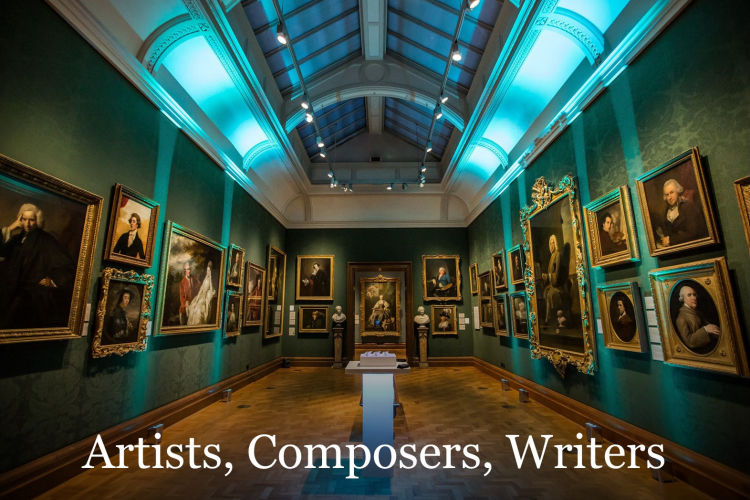6. Surprised by Joy.
After a lifetime of melodrama and tragedy, Giuseppe Verdi turned to comedy in his last opera, Falstaff,
which he premiered at age 80. Though never a stranger to joy in his earlier work, Henri Matisse, confined to
a wheelchair, rediscovered his youthful energy in colorful paper cutouts. Marc Chagall found his salvation in
music. And stern abstractionist (but jazz-lover) Piet Mondrian seemed to be entering new ground in his last works,
Broadway Boogie-Woogie and Victory Boogie-Woogie. Poets and film-makers, for some reason, seldom
experience a wild stylistic shift in their last years, but those such as Seamus Heaney, Mary Oliver, Federico
Fellini, and Robert Altman, whose work had been characterized by joy and grace throughout, just became that much
more graceful, more joyful
Six poems are included in this class; do read the
texts in advance. rb.
Here are brief bios of the artists and poets whose works come into the class, listed in chronological order of birth.
You can access all biographies via the BIOS link on the syllabus page.
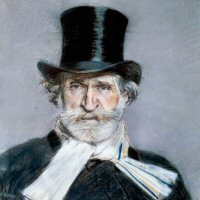 |
Giuseppe Verdi, 1813–1901. Italian opera composer.
Verdi's two dozen or more operas (depending on how you count them) make him the leading Italian opera composer of his time and among the two or three greatest opera composers ever. After what he called his "years in the galleys," he hit his stride in the early 1850s with the trio of Rigoletto, Il Trovatore, and La Traviata. He intended Aïda to be his last work, but was persaded out of retirement to write his final Shakespearean masterpieces: Otello (1886) and Falstaff (1893).
|
 |
Arrigo Boïto, 1842–1918. Italian librettist and composer.
Boïto composed a number of operas, of which Mefistofele (1867) is the most often performed. But his fame rests mainly on his masterly libretti for Verdi (Othello and Falstaff) and several other composers.
|
 |
Henri Matisse, 1869–1954. French painter and sculptor.
Matisse and Picasso stand as the giant pillars of French art in the first half of the 20th century. Matisse was the slower starter and the less versatile, but he stands alone for the richness of his color and the sensuality of his forms, whether in painting or in sculpture. Suffering from crippling arthritis at the end of his life, he produced a completely new oeuvre in colored-paper collage.
|
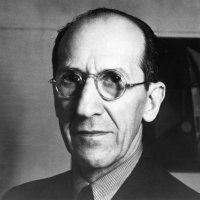 |
Piet Mondrian, 1872–1944. Dutch painter.
After painting in a fairly naturalistic, he went through a rapid development between about 1910 and 1915, moving towards total abstraction, the elimination of curved lines and mixed colors, joining with Theo van Doesburg in 1917 to create the movement De Stijl. He spent his last four years in New York City, where his manner became less monumental and more syncopated, no doubt inluenced by the jazz he loved.
|
 |
Marc Chagall, 1887–1985. Russian-French painter.
Living in Paris before WW1, and in Russia during it, Chagall mingled with the most innovative artists of the time, but though he learned from them, he quickly developed his own colorful style and personal iconography. These he continued for the rest of his life, working in France, with a wartime sojourn in New York. The main spurs to his creativity in later years were Jewish themes and music.
|
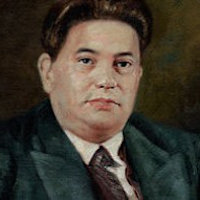 |
Darius Milhaud, 1892–1974. French composer.
A member of Les Six (with Satie, Poulenc, and others), Milhaud was a prolific composer in all media, noted for his early use of jazzand his experiments in polytonality and unusual instrumental combinations.
|
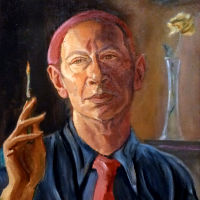 |
E. E. Cummings, 1894–1962. American poet.
One of the best-known American modernists of the earlier 20th century, Cummings treated generally accessible themes in a characteristic style that avoided capital letters, treated punctuation in unconventional ways, and used line-length and layout for visual and expressive effect. He was also an acomplished painter; the illustration here is a self-portrait.
|
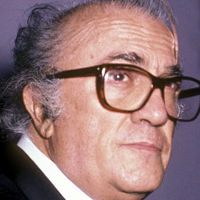 |
Federico Fellini, 1920–93. Italian film director.
After a brief stint as a law student to please his parents, Fellini broke out as a cartoonist, writer, and later filmmaker. Beginning in the neo-realist style with works like La strada (1954), he gradually moved towards the more fantastic treatment that defined his style, in films like La dolce vita (1960), 8½ (1963), and Amarcord (1973). He is commonly listed among the greatest directors ever.
|
 |
Robert Altman, 1925–2006. American film director.
Internationally decorated as one of the great directors of all time, Altman was known for his large-cast free-form projects that tied many short glimpses together into a complex tapestry. His most famous films include M*A*S*H* (1970), Nashville (1975), and Gosford Park (2001).
|
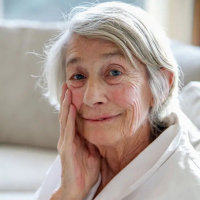 |
Mary Oliver, 1935–2019. American poet.
Winner of the National Book Award and Pultizer Prize, Oliver's work is "inspired by nature, rather than the human world, stemming from her lifelong passion for solitary walks in the wild [and] characterised by a sincere wonderment at the impact of natural imagery, conveyed in unadorned language." [Wikipedia]
|
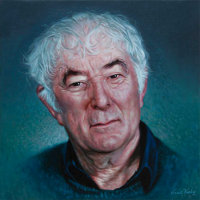 |
Seamus Heaney, 1939–2013. Irish poet and translator.
Nobel Prizewinner Heaney was born in Northern Ireland, making him technically a British citizen. But he has preferred to identify himself with the Republic of Ireland, portraying her scenery and commenting on her culture and politics. In later years, he taught at Harvard.
|
 |
Helen Dunmore, 1952–2017. English poet and novelist.
The author of over a dozen novels, Dunmore won the inagural Orange Prize for Fiction with A Spell of Winter (1995) and the Costa Book of the Year Prize for her posthumous poetry collection Inside the Wave.
|
























